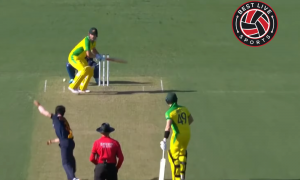The ICC Bowling Rules are the codified rules that govern how cricket balls can be bowled legally during an international cricket match and how the fielders may field them. They are used in Test and first-class cricket matches that are played under the auspices of the International Cricket Council (ICC) worldwide, and also in some domestic cricket leagues such as the Sheffield Shield in Australia, Plunket Shield in New Zealand, County Championship in England, List A matches in India, List A matches in South Africa, List A matches played by the England national team; and the CB40 competition in England.

No doubt, cricket has been around for a long time. Its origins can be traced back to 16th-century England, where boys played a bat-and-ball game called stoolball. Over time, stoolball evolved into rounders before becoming modern-day cricket. The next time you’re watching your favorite match on TV and see them toss up a leather ball—now you know it all started with children playing with a stool. While that may be an interesting fact about cricket history, it doesn’t really tell us how to play today’s game.
Types of positions in the field
a wicketkeeper (or ‘keeper), two slip fielders, three gully fielders, a mid-wicket fielder, a short-leg fielder, long leg, and leg slip. The presence of different positions depends on whether a right- or left-handed bowler is bowling. The umpire, who is behind and outside of all on-field action during play, has an ideal view of each fielder’s positioning. A player who fields closest to the batsman will be known as a ‘short fine leg’ while one fielding just within sight of the square will be called a ‘fine leg’. In addition, there are positions named by where they are relative to each other as in mid-off or mid-on.
Practicing at home with a small ball
An expert cricket bowler can throw as fast as 90 miles per hour, but that doesn’t mean you should try to throw at that speed. To keep things safe, check your bowling speed on a radar gun, and don’t play a game if you’re throwing more than 50 miles per hour. The fastest ball in cricket history was thrown by Shoaib Akhtar, who hit 100 miles per hour during an actual match in 2003. To put it into context, a 45-mile-per-hour fastball pitcher in baseball would be considered remarkably quick. Check out Bowling Speeds for some jaw-dropping stats on who is currently considered some of the fastest bowlers out there! You will probably agree with our thoughts after reading them!
Playing more games
The ICC recognizes bowling actions in cricket as legitimate if they meet certain criteria, which include an uninterrupted bowling action. With these conditions met, a bowler is cleared for play. If a bowler’s speed is deemed too high or too dangerous for play, he or she is banned from playing. The fastest recorded ball in cricket history was released by Shoaib Akhtar of Pakistan at 161 kilometers per hour (100 miles per hour). Faster than that, and you could be dangerous to yourself and everyone around you. There are several different rules in place with regard to how fast is too fast on any given day in a game of cricket.
The ICC Bowling Rules
How to Play Cricket History and Rules – Everything you need to know about cricket-playing rules. Learn fast balls, slow balls, no balls, front foot no ball rule, back foot no ball rule, free hit in cricket, bowler safety law, etc
What are the regulations in ICC?
The bowling action should commence from behind a line level with the popping crease at a point no nearer than six yards from it. The regulations of cricket according to ICC are set out in their Playing Handbook, which is updated every year. There are three main laws that govern our great sport. Law 1 The batsman must keep at least one foot grounded behind or on a line that extends forward of his popping crease at any time while a delivery is being bowled by a member of either team. Law 2 The ball must be bowled from each end alternately so that no more than six balls are bowled by either team in an over.







6 Responses
very informative articles or reviews at this time.
Pretty! This has been a really wonderful post. Many thanks for providing these details.
This was beautiful Admin. Thank you for your reflections.
Very well presented. Every quote was awesome and thanks for sharing the content. Keep sharing and keep motivating others.
I very delighted to find this internet site on bing, just what I was searching for as well saved to fav
I truly appreciate your technique of writing a blog. I added it to my bookmark site list and will